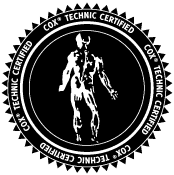Active Release Technique for Office Workers: Relief for Neck and Back Pain
Working long hours at a desk often brings physical challenges, especially for office workers. Sitting for extended periods can lead to tight muscles, restricted mobility, and pain, especially in the neck and back. One promising solution is active release technique (ART), which specifically targets muscle tightness, scar tissue, and other soft-tissue issues to relieve pain and restore movement.
This blog explores how active release techniques benefit office workers, particularly those dealing with neck and back discomfort. Using the latest studies and insights, we will delve into why ART might be the answer for people looking for active release techniques near them to address work-related musculoskeletal issues.
What Is Active Release Technique?
Active release technique is a specialized therapy that addresses soft-tissue injuries, particularly those caused by repetitive strain. ART practitioners use precise, hands-on pressure and motion techniques to break up scar tissue, improve blood flow, and restore movement. The process is often likened to “freeing” tissues that feel stuck, allowing muscles, tendons, and ligaments to glide smoothly once again.
Originally designed for athletes, active release technique has grown popular among office workers and others who suffer from chronic pain or restricted mobility due to repetitive stress on muscles and joints.
How Active Release Therapy Works
During an ART session, a trained practitioner uses their well trained hands to apply targeted pressure while moving the muscle or tissue in a way that stretches and releases tension. This technique focuses on breaking up adhesions or scar tissue, which often develops from repetitive use or injury.
ART sessions usually last about 20–25 minutes per area, with multiple sessions needed for complex cases. Unlike general massage, ART is highly specific, addressing each muscle layer separately to achieve deep relief. This specificity is why finding active release therapy near you with a certified practitioner can make a significant difference.
Benefits of Active Release Technique for Office Workers
The following are some of the benefits office workers can enjoy with ART:
1. Eases Neck and Back Pain
Neck and back pain are among the most common complaints for office workers. Hours spent sitting can lead to tight psoas and iliopsoas muscles, which contribute to lower back pain. A 2023 study comparing ART with Muscle Energy Technique (MET) showed that ART was significantly more effective in reducing pain and improving mobility for people with psoas syndrome, a condition linked to tight hip flexors and lower back pain.
Participants in the ART group reported notable improvements in pain levels by the sixth week of treatment, demonstrating ART’s value in managing low back pain and flexibility challenges that commonly affect desk-bound workers.
2. Improves Range of Motion
Another consequence of prolonged sitting is a reduced range of motion. ART has proven beneficial for increasing flexibility and range of motion, especially in the hips, shoulders, and back.
In the 2023 study, participants treated with ART experienced significant gains in range of motion by the end of six weeks, as measured with a Goniometer. Enhanced mobility can improve overall posture, reduce strain on muscles, and make everyday movements more comfortable.
This added flexibility is particularly useful for office workers who need therapy, as it can undo the cumulative tension caused by hours of repetitive desk activities.
3. Boosts Dynamic Balance
In addition to easing pain and enhancing range of motion, ART has been shown to improve balance, which is essential for core stability. A critical element in ART’s effectiveness is its ability to address muscle imbalances and weaknesses, which are prevalent among people with sedentary jobs.
In the study comparing ART with MET, ART was associated with improvements in balance, as evaluated by the Berg Balance Scale, a standard tool for measuring stability. For office workers, a stronger core and improved balance can prevent falls and reduce strain on the spine and lower back.
Evidence of ART’s Workplace Effectiveness
ART’s benefits are not just theoretical—they have been documented in real-world workplace studies. From 2014 to 2018, a large-scale descriptive study on ART in North America evaluated nearly 700,000 treatments provided to workers experiencing musculoskeletal discomfort.
According to the study, ART treatments led to an 87.2% improvement in pain levels, showing that ART could be a highly effective solution for workplace-related pain.
Low Workers’ Compensation Rates
One major finding from the study was that only 2.27% of ART-treated cases went on to workers’ compensation, demonstrating that ART could minimize the need for more costly treatments and prolonged absenteeism. By reducing the risk of injuries becoming severe enough to require compensation, ART offers a financial and practical advantage for both employers and employees.
If you are searching for active release techniques near you to reduce workplace pain and stay productive, ART could be a strategic addition to your health plan.
Advantages of On-Site ART
The study also highlighted the benefits of offering ART directly in the workplace. On-site ART allows practitioners to understand the specific physical demands of each employee’s role, leading to a more tailored treatment.
For office workers, having ART on-site means less time away from work and a greater likelihood of attending regular sessions, which can accelerate recovery. This approach underscores ART’s value not just as a treatment for pain but also as a proactive method to prevent long-term injuries from developing.
What to Expect in an ART Session
If you are considering active release technique near you, knowing what to expect can make the process smoother. Your ART practitioner will start by evaluating your range of motion and identifying areas with scar tissue or tension. They will then apply hands-on pressure to each area, moving your muscles to break up adhesions and improve blood flow.
Each session focuses on specific problem areas, and improvement often occurs over several visits. ART might feel intense, especially in areas with tight muscles, but it should not be painful. This gradual release of tension helps restore normal movement and function.

